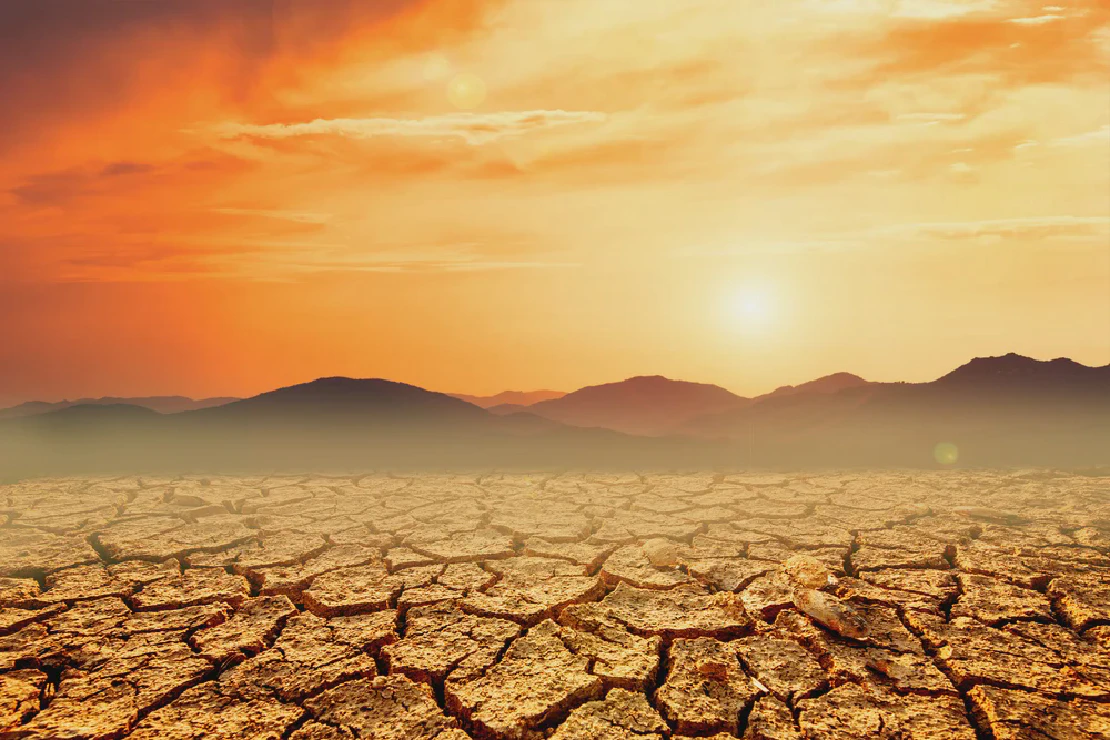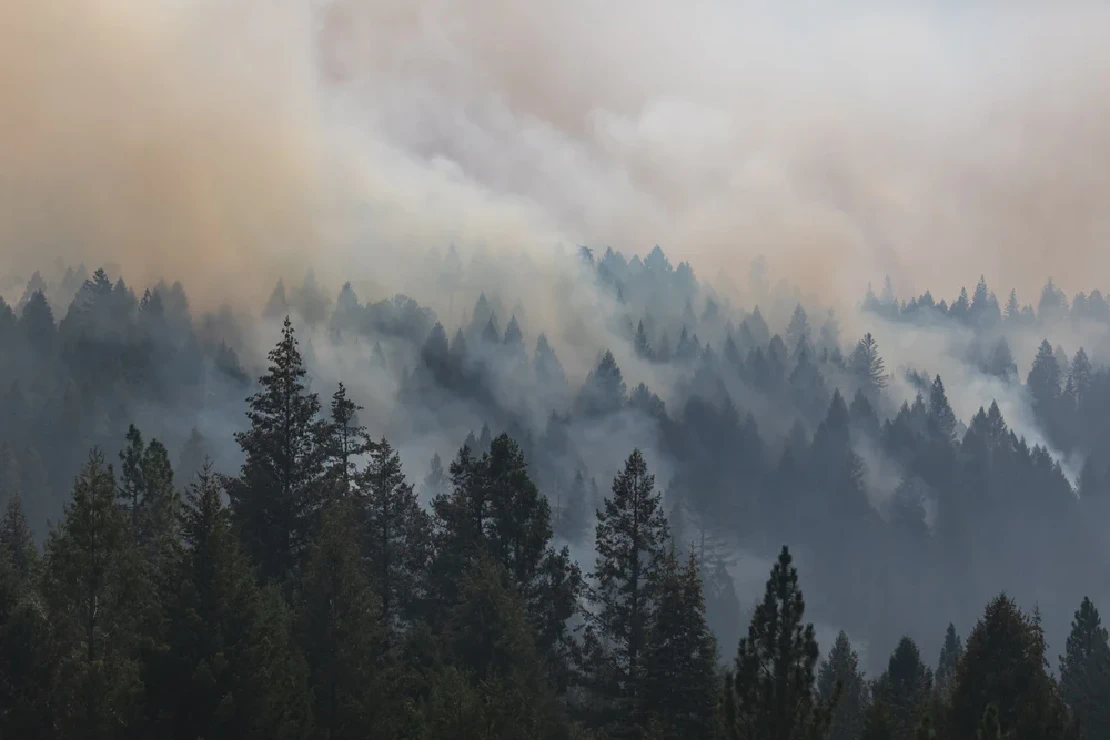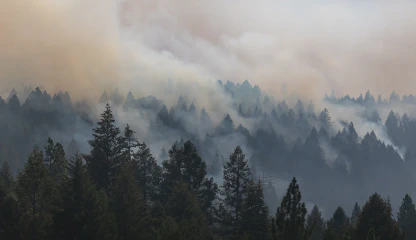As a consequence of global climate change, the world’s climate has become hotter and drier, giving rise to a magnified global wildfire crisis. Over the years, certain regions like the United States, Canada, and Australia have been familiar with intense wildfires. However, in recent decades, these wildfires have emerged in unexpected places where they were once rare, such as Siberia and the Arctic.
In June 2021, the Siberian forests faced an unprecedented outbreak of wildfires triggered by record-breaking heat and prolonged drought conditions. By August 16, 2021, the Siberian wildfires had grown to a size larger than all other wildfires worldwide combined. According to NASA , the smoke even reached as far as the North Pole.
In 2023, the smoke from wildfires covered large parts of the US and Canada, turning the skies orange and showing the severity of the global wildfire crisis. Canadian wildfires have already burned over 10 million hectares (24.7 million acres) in 2023.
Below is the 2022 wildfire season infographic that provides insights into the impact of wildfires worldwide.
Global Wildfire Overview - 2022
According to Global Wildfire Information System (GWIS) data, in 2022, there were approximately 875,574 recorded wildfires across the world. Africa took the lead in this count, experiencing around 560,383 fires. Most of these fires occurred in Angola (81,269) and the Democratic Republic of Congo (118,642).
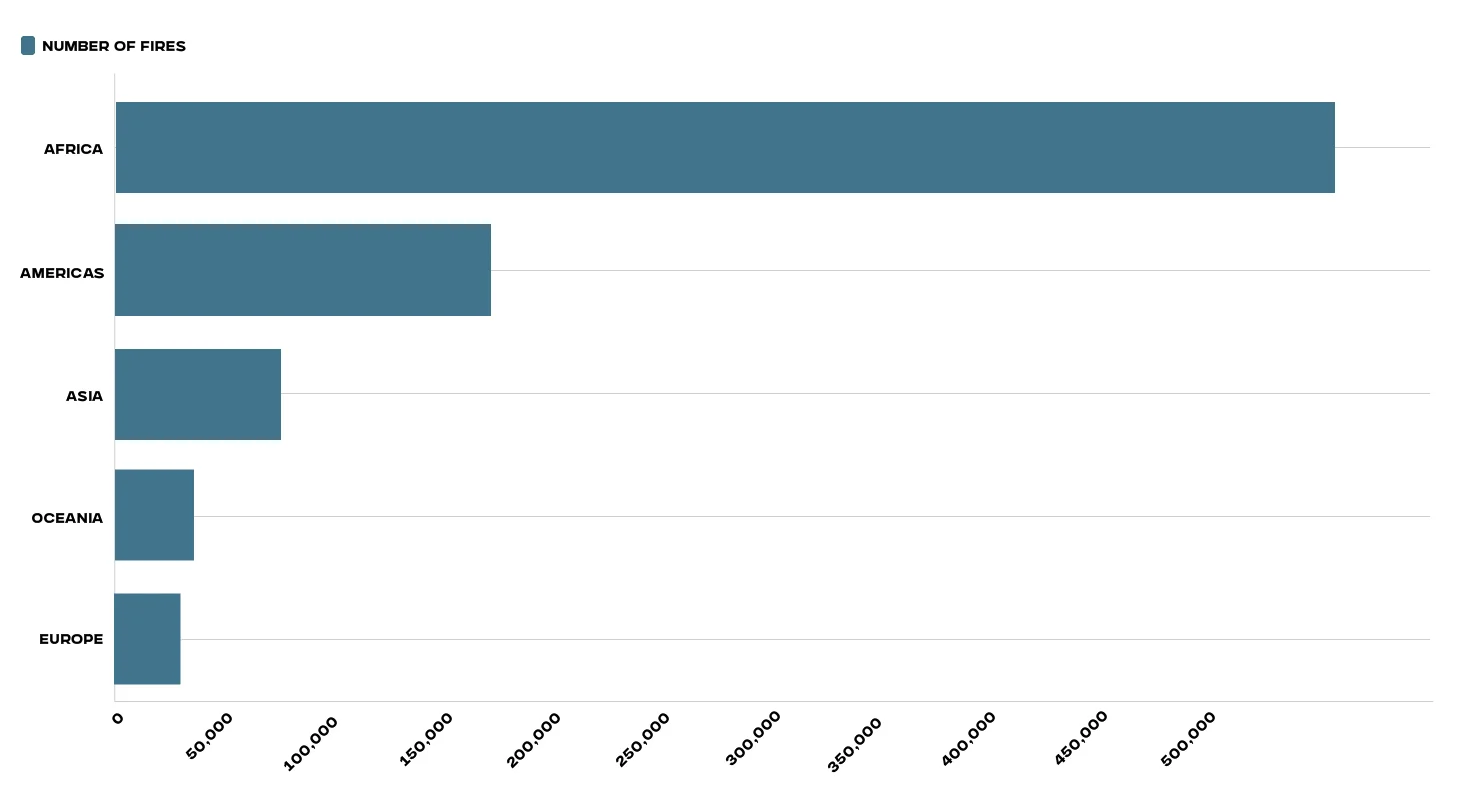
Estimated Number of Fires, 2022 - GWIS
Wildfires significantly harm both natural environments and residential structures, presenting dangers to human welfare. In 2022, the total burnt area across Africa, the Americas, Oceania, Asia, and Europe was approximately 357,677,488 hectares (ha).
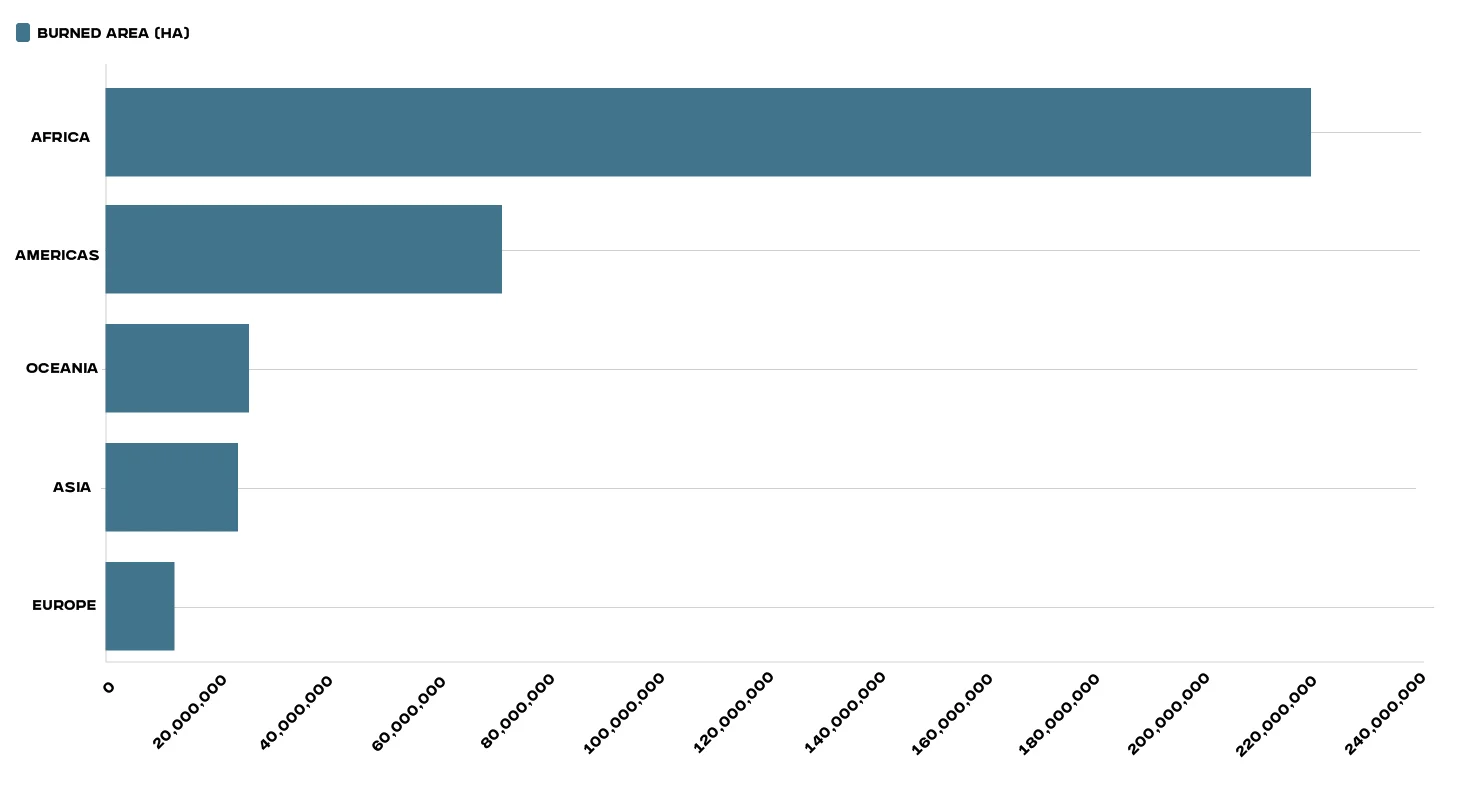
Estimated Burned Area, 2022 - GWIS
The 2022 global wildfire season also resulted in a 5.22 million hectares of tree cover loss.
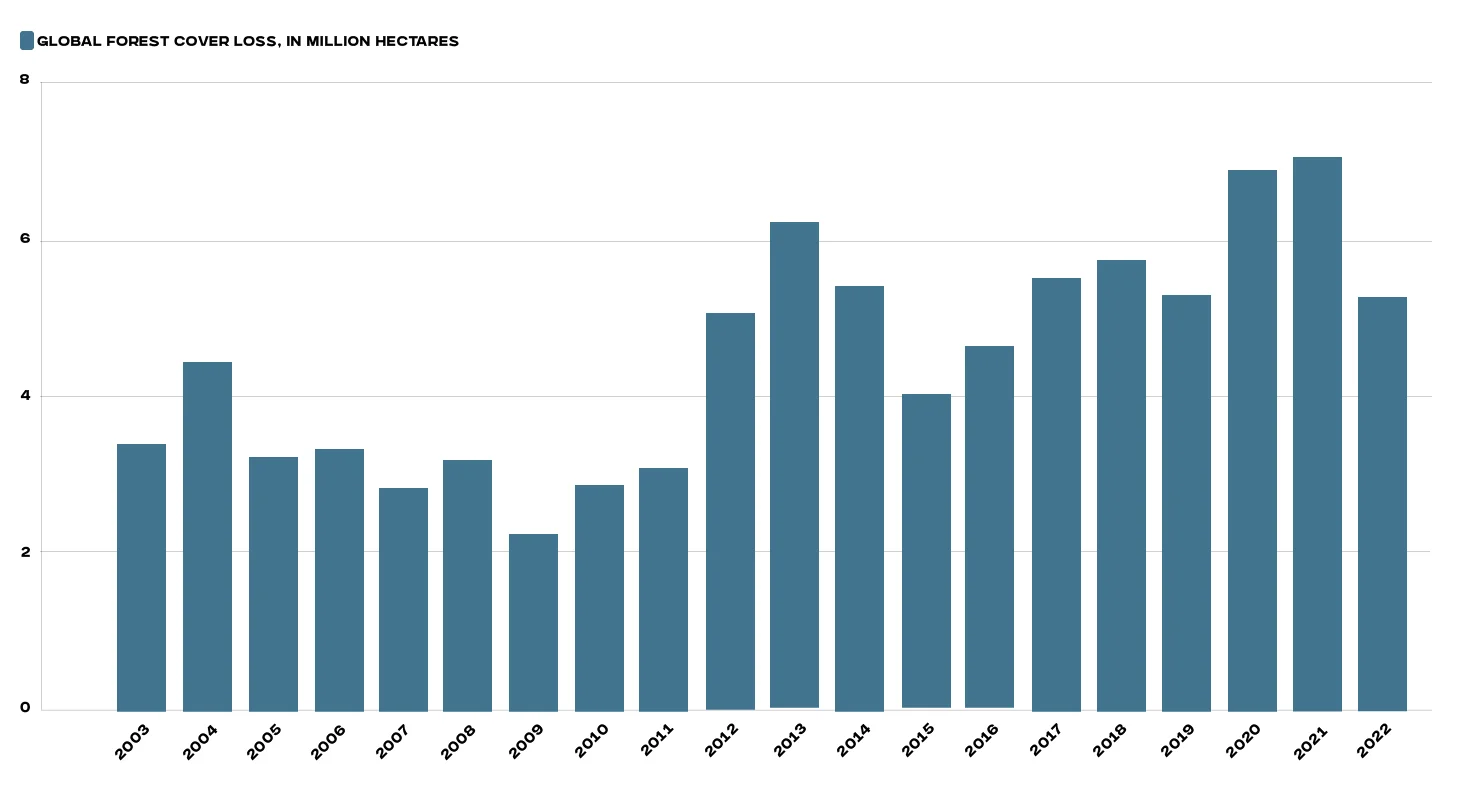
Global Forest Cover Loss, 2003 - 2022 - Global Forest Watch
In addition to causing extensive destruction of natural landscapes, wildfires have a significant impact through the emission of CO2 and other greenhouse gasses. This creates a destructive loop where climate change fuels more frequent and intense wildfires, while these very fires release gasses that further contribute to the ongoing climate crisis. Below is a chart showing the global CO2 emissions rates for the time period from 2003 to 2021.
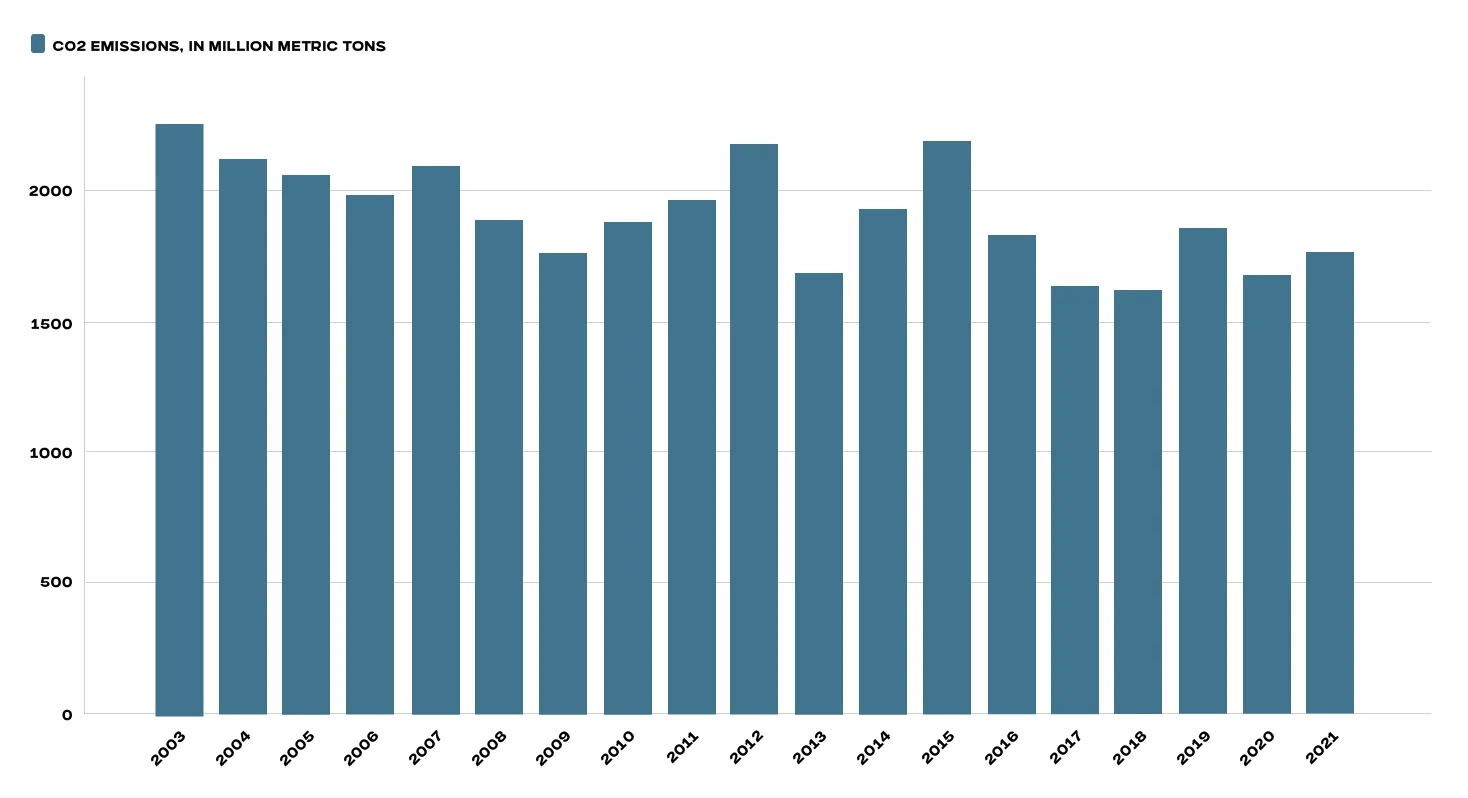
Global Annual CO2 Emissions from Wildfires, 2003 - 2021 - CAMS
As of December 10, 2022, according to Copernicus Atmosphere Monitoring Service (CAMS), 1,455 megatonnes of carbon emissions were generated from wildfires around the world in 2022. And the study conducted in 2022 revealed a connection between wildfire smoke and ozone depletion, sounding an alarming warning about an additional impact that wildfires could potentially cause.
As shown from the figures above, the negative impact of wildfires is immense. And while we can’t eliminate them entirely, we can focus on detecting wildfires early on before their destructive impacts spread. For this purpose, FireSafe introduced a free Twitter bot offering alerts at the coordinate level, presently accessible in California.
